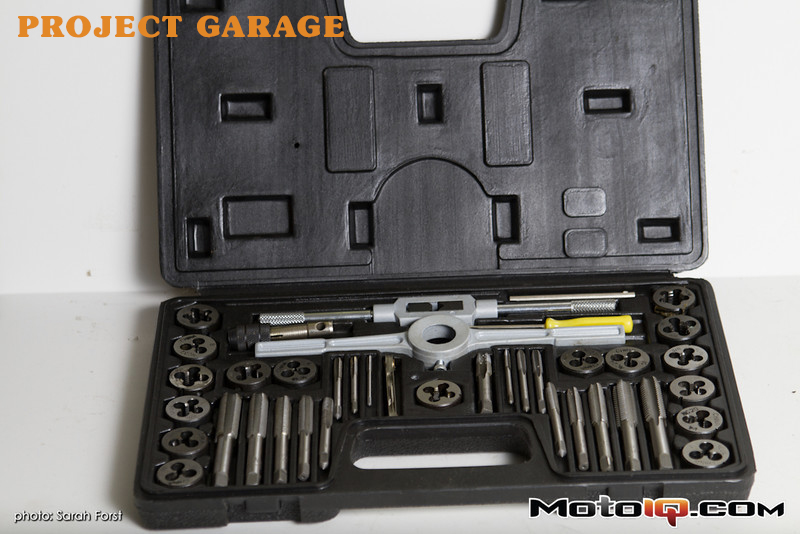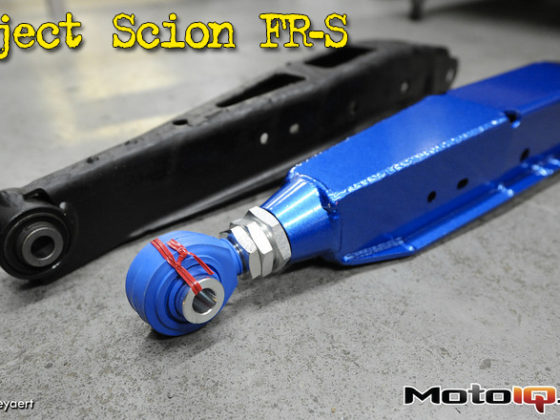,
 |
| Pulleys, gears, and flywheels aren't easy to remove. A puller tool typically has 2 or 3 arms that should be applied securely to the back of the object you're uninstalling and will spread to different lengths to accomodate various sizes of object. |
You can't get the underdrive benefits of lightened pulleys without a pulley puller to perform the install. Pulley pullers remove pulleys, balancers, and gears with tapped holes. Adjust the jaws securely on the back of the pulley, gear, or flywheel and use a socket on the forcing screw, tightening it until the object becomes loose. The puller body applies force through the center hole while the puller shaft pushes against the pulley shaft to separate the pulley.
 |
| Advancing the timing will fire the spark plug a couple of degrees sooner giving the air fuel mixture more time to burn, releasing more energy and producing more power. |
Few things in life are free. You can play with the timing of some older model engines with a timing light to get more power. The timing advance is only calibrated when the engine is at normal operating temperature and idling near the base idle. Connect the timing light to your battery and number 1 spark plug wire, lock the engine in timing mode, and point the light at the crank pulley. Use the timing marks on the crank pulley the location of the timing adjustment pin to see where the spark plug is fire. Advance or retard the timing by turning the distributor or crank angle. A lower octane fuel will burn more quickly so make sure you run a higher octane fuel to control detonation. Back off if you hear any pinging! The most power is typically found just before the power curve falls flat on a dyno. Adjusting timing on late model cars involves changing the mapping or reflashing the engine's ECU.
 |
| Use a voltmeter and test light for tracing your electric gremlins. |
A volt-ohm meter and test light are good tools for testing circuits and sensors and checking continuity, voltage, and resistance in a circuit. More expensive kits usually have heat and chemical resistant, sometimes double insulated, flexible silicone cords and connectors. The kits usually include a variety of clips, probes or piercing pin tips that connect to terminals, connectors, and wires. A multimeter measures AC and DC volts, resistance, and continuity. The red probe should be connected to the positive and the black one to the negative. The multimeter is more functional but a test light is convenient simply for seeing if a headlight socket or fuse is getting power. On the test light, the leads are reversible. You can connect the clip lead to a ground and use the probe to test the positive power source or you can connect the clip lead to a good positive source and use the probe to check for a good ground. The probe is made to pierce the plastic insulation on a wire. If it lights up, you're good.
 |
| This variable wattage soldering station is a good tool for everything from RC car work to rewiring an ECU. Get the iron nice and hot and apply the solder to the component being soldered. If you apply the solder only to the tip of the iron, you'll get a cold solder joint which typically fail. |
For wiring jobs from audio equipment to rewiring an ECU to the wiring harness, a good soldering iron works wonders. A simple soldering iron is comprised of a heated metal tip and insulated handle and can either be gas-fired or electric. The tips come in different shapes with conical ones used most often with electronics work. The tip transfers thermal energy from the heater to the solder connection. Soldering irons are available from 15W to over 100W but for most car jobs, you'll probably need 25-60W. High wattage irons allow heat to flow quickly into a joint so it is more rapidly made, especially good for larger gauge wires. The easiest to use soldering irons are 60% tin 40% lead (or 63/37) alloy with cores of non-corrosive flux. Cheaper irons typically use bare copper which oxidizes quickly and can't conduct heat to the components being soldered. The Weller WP35 (about $50) is a good soldering iron for most car uses. If your pockets run a little deeper, upgrade to the Hakko FX-888 or Weller WES51 ($100). Soldering tweezers work well for soldering small components such as resistors and capacitors.
Solder comes in gauges like wires. 18swg (standard wire gauge) is common for general use.Thinner 22swg is better suited for printed circuit boards. For the cleanest connection, use a damp sponge to wipe the tip so burnt flux doesn't build up on the end. Flux helps conduct heat and cleans oxides from the connection. Most solder for electronics contains flux. Don't use a solder with an acid flux on electronics. This is used for soldering components like sheet metal.



